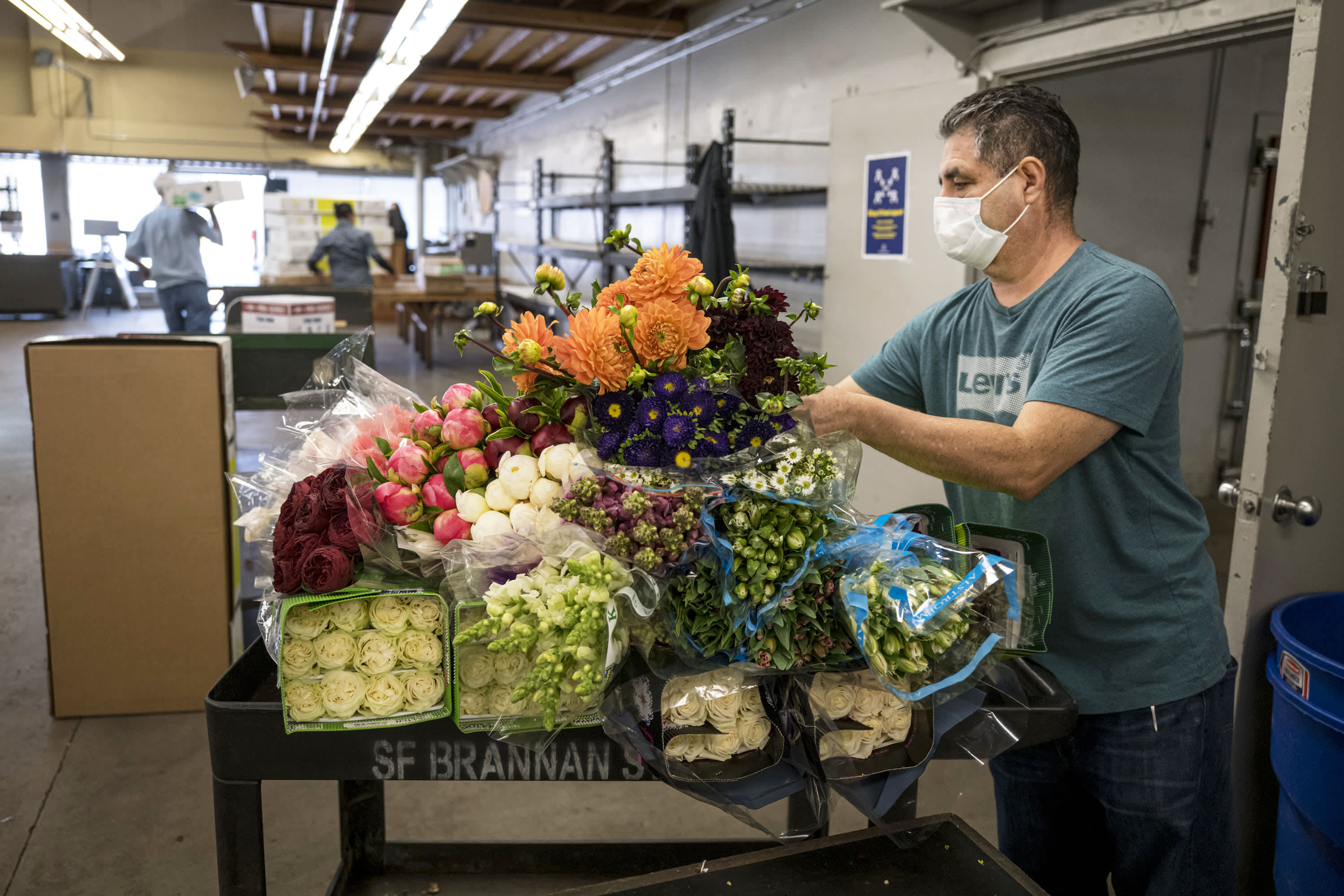An employee wearing a protective mask prepares cut flowers at a wholesale flower market in San Francisco, California, on Monday, May 18, 2020.
David Paul Morris | Bloomberg via Getty Images
The economy is uncertain for small businesses, yet many of them are still taking their time securing emergency funding through the Paycheck Protection Program.
The federal government rolled out the so-called PPP in April as coronavirus and ensuing stay-at-home orders took their toll on small businesses.
The forgivable loan program was originally intended to cover eight weeks of payroll costs, plus mortgage interest, utilities and rent expenses.
The first round of funding — amounting to $349 billion — ran out in less than two weeks.
More from Smart Tax Planning:
Five lessons for small businesses, post-PPP
Tax Day is coming. Get ready for July 15
Used a PPP loan for rent? You can still get some forgiveness
Demand has cooled significantly: The pot was refilled on April 27 to the tune of $310 billion, and nearly seven weeks later, there’s still $130 billion that’s gone unclaimed, according to the Small Business Administration.
Confusion around the workings of the program, especially over forgiveness, could be a reason why entrepreneurs are leery of applying for aid.
“It’s like they’re building the airplane while it’s in the air,” said Albert Campo, CPA and managing partner at AJC Accounting Services in Manalapan, New Jersey.
Indeed, late yesterday the Treasury Department and the SBA released an interim final rule codifying updates to the program.
The rules now give owners up to 24 weeks to use their loan proceeds and allow for forgiveness if at least 60% of the funding goes toward payroll expenses. Partial forgiveness is also now an option.
“Clients are more concerned about how they can use the money to make sure they satisfy the forgiveness requirements,” said Campo. “‘How do I use it so I have it forgiven?’ is the primary question, and the goal posts keep moving.”
The window is closing
Luis Alvarez
Business owners who are uncertain about whether to apply for PPP cash have a new worry on the horizon: Incoming PPP loan applications must be approved by June 30.
Further, finding a willing lender might be difficult.
“Not many banks are offering the loans anymore because they’ve either hit their internal cap or there isn’t enough time to get things processed,” said Campo.
“If you’re waiting and you’re looking to apply, you might have a week left, tops, to get it all together,” he said.
For self-employed applicants, that also means having their 2019 taxes wrapped up, as Schedule C of the individual income tax return — which details the profit and losses of a small business — is a key document lenders require.
Possible extension
PPP applicants who received funding back in April may be close to using up all of their money.
Currently, recipients can’t take a second infusion of cash from the loan program, although there’s some legislation in the works to further extend the lifeline for some businesses.
The Prioritized Paycheck Protection Program, which is backed by Sens. Ben Cardin, D-Md.; Chris Coons, D-Del.; and Jeanne Shaheen, D-N.H, would allow an additional PPP loan for small businesses with 100 employees or less, including sole proprietorships and the self-employed.
Firms must have already expended their first PPP loan or be on pace to do so, and they must show a revenue loss of at least 50% due to the coronavirus pandemic.
“Even as our economy begins to recover, small businesses have a long way to go before they’re back on their feet,” said Shaheen.
“A second installment of PPP funding is the lifeline many businesses need to get them to the other side of this crisis while keeping employees on payroll,” she said.
